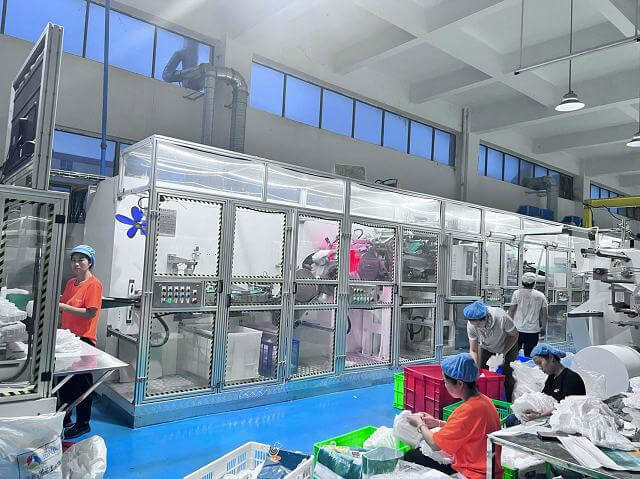Author:Haina Machinery Factory FROM:Diaper Machinery Manufacturer TIME:2023-12-07
Mastering the Operation of a Fully Automatic Infant Diaper Machine

In today's fast-paced world, the demand for infant diapers is constantly increasing. To meet this demand, fully automatic infant diaper machines have become essential in the manufacturing industry. However, operating these machines efficiently and effectively requires a certain level of skill and knowledge. In this article, we will explore the key aspects of mastering the operation of a fully automatic infant diaper machine.

Before operating a fully automatic infant diaper machine, it is crucial to have a comprehensive understanding of its various components. These components include the raw material feeding system, waistband and leg cuff application modules, absorbent core formation system, and packaging unit. Familiarizing oneself with each component and its function is the foundation for successful machine operation.

Properly setting up the machine is essential for its smooth operation. This includes configuring the machine parameters such as diaper size, production speed, and packaging options. Additionally, ensuring that all necessary materials, such as non-woven fabric and SAP (Super Absorbent Polymer), are correctly loaded into the machine is vital for optimal performance.
Safety should always be a top priority when operating any machinery, including fully automatic infant diaper machines. Operators must follow all safety guidelines and wear appropriate protective gear, such as gloves and safety glasses. Regular maintenance checks and inspections should also be conducted to identify and address any potential hazards.
Producing high-quality infant diapers requires constant monitoring of the production process. Operators should regularly inspect the diapers for potential defects, such as uneven waistbands or leakage issues. Any deviations from the required specifications should be immediately addressed to ensure consistent product quality.
Even with proper operation and maintenance, fully automatic infant diaper machines can encounter occasional issues. Operators should be trained to identify and troubleshoot common problems, such as material jams and sensor malfunctions. Regular maintenance tasks, including cleaning, lubrication, and parts replacement, should be performed to keep the machine in optimal condition.
To maximize the productivity of a fully automatic infant diaper machine, operators should strive to optimize efficiency. This may involve minimizing downtime by conducting quick changeovers between production runs and implementing preventive maintenance measures. Additionally, operators can analyze production data to identify areas for improvement and implement process enhancements.
Effective operation of a fully automatic infant diaper machine requires a well-trained and skilled workforce. Regular training sessions should be conducted to update operators on new techniques, technologies, and safety protocols. Continuous skill development and cross-training can also be beneficial in ensuring operators are proficient in all aspects of machine operation.
The field of fully automatic infant diaper machines is constantly evolving with new advancements and innovations. Operators should stay updated on the latest trends, such as automation technologies, sustainable materials, and smart manufacturing solutions. Embracing these future-oriented developments can help manufacturers stay competitive in the industry.
Mastering the operation of a fully automatic infant diaper machine requires a combination of knowledge, skills, and attention to detail. By understanding the machine components, following safety guidelines, monitoring production quality, troubleshooting issues, optimizing efficiency, and staying up-to-date with industry trends, operators can ensure smooth and efficient operation of the machine, resulting in high-quality infant diapers and satisfied customers.
